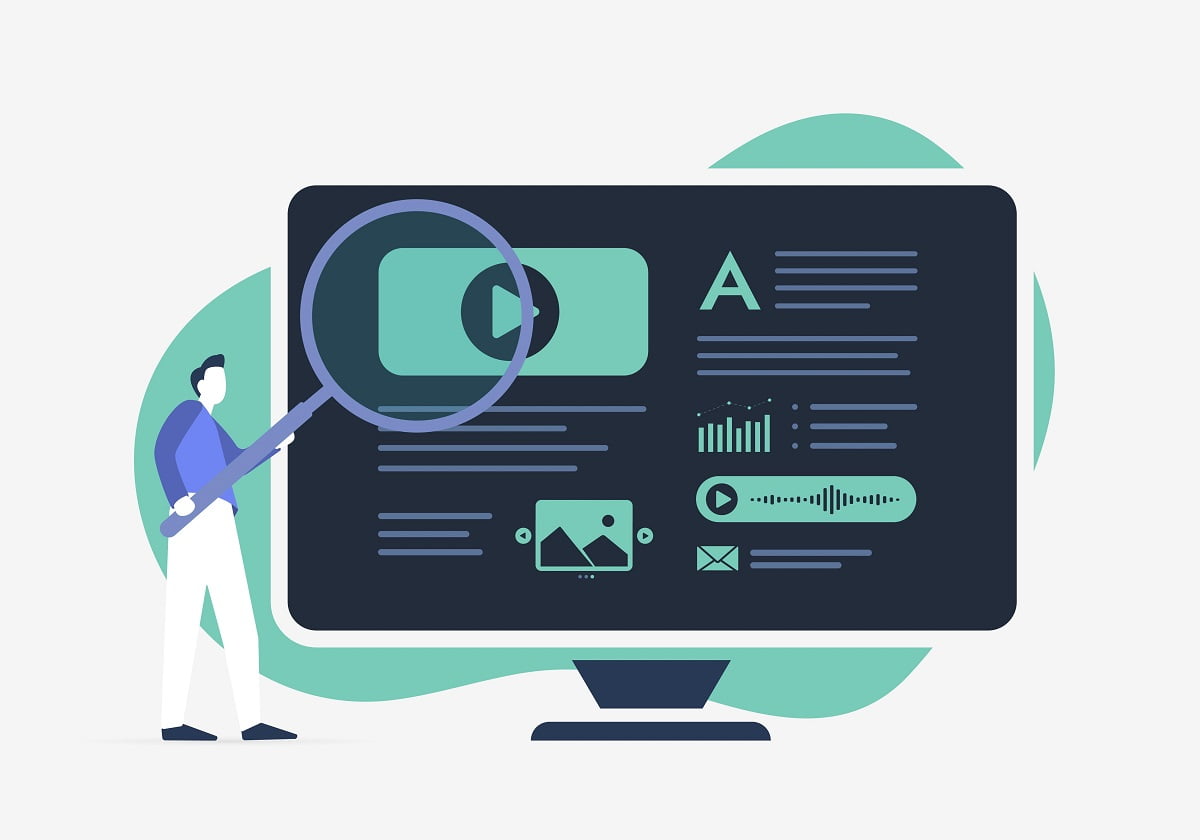Ultimate Blog Optimization Checklist for Boosting Your SEO

Welcome to our comprehensive guide on blog optimization! As bloggers, we understand the importance of maximizing your blog’s visibility, attracting more readers, and improving your search engine rankings. Did you know that optimizing your blog content can lead to a 434% increase in search engine traffic? That’s right, implementing the right strategies can have a significant impact on the success of your blog!
In this article, we will provide you with the ultimate blog optimization checklist for boosting your SEO. By following these steps, you can enhance your blog’s visibility, improve rankings, and ultimately achieve your blogging goals.
Key Takeaways:
- Follow our blog optimization checklist, which includes essential steps for improving your SEO.
- Stay up to date with the latest SEO trends and techniques to ensure your blog remains competitive.
- Optimize your blog content by incorporating relevant keywords and implementing best practices.
- Create a well-defined blog SEO strategy that includes keyword research, on-page optimization, and link building.
- Regularly measure and analyze your blog’s performance to identify areas for improvement and drive better results.
Understand the Basics of SEO
Before diving into blog optimization, it’s crucial to understand the basics of SEO. Familiarize yourself with the SEO checklist for 2024 to stay up to date with the latest trends. Consider implementing technical SEO techniques and off-page SEO strategies to ensure your blog is search-engine friendly.
When it comes to SEO, there are two essential components to consider: technical SEO and off-page SEO. Technical SEO involves optimizing the technical aspects of your website to improve its visibility in search engine results. This includes factors such as website speed, mobile-friendliness, crawlability, site structure, and URL optimization. By implementing technical SEO best practices, you can ensure that search engines can easily crawl and index your blog, leading to better visibility and higher rankings.
Off-page SEO, on the other hand, focuses on building a strong online presence and reputation for your blog. This involves activities such as link building, social media promotion, influencer outreach, and guest blogging. By obtaining high-quality backlinks from authoritative websites and engaging with your audience on social media platforms, you can improve your blog’s credibility and increase its visibility in search engine results.
Blog Optimization Checklist
Technical SEO Checklist
- Optimize website loading speed
- Ensure mobile-friendliness
- Create a clear site structure
- Optimize URLs with relevant keywords
- Use descriptive title tags and meta descriptions
- Optimize header tags (H1, H2, H3, etc.)
- Implement schema markup to enhance search engine understanding
- Generate and submit an XML sitemap
- Optimize images with alt tags
- Fix broken links and 404 errors
Off-Page SEO Checklist
- Build high-quality backlinks from relevant and authoritative websites
- Engage with your audience on social media platforms
- Create valuable and shareable content to attract natural backlinks
- Conduct influencer outreach to promote your blog
- Participate in industry forums and communities
- Monitor and manage online reviews and reputation
- Optimize social media profiles for better visibility
Optimize Your Blog Content
To boost your blog’s visibility, it is essential to optimize your blog content using SEO best practices for blogs. By implementing these strategies, you can enhance your blog posts, make them keyword-rich, and increase their search engine ranking potential.
One of the key aspects of optimizing your blog content is incorporating relevant keywords naturally throughout your posts. By including these keywords in your headings, subheadings, and within the body of your content, you can signal to search engines what your blog post is about and improve its discoverability.
Remember, the goal is to strike a balance between optimizing for search engines and creating valuable content for your readers. Avoid keyword stuffing, as it can negatively impact your blog’s credibility and user experience.
Additionally, pay attention to the structure of your blog posts. Using proper formatting, such as headings, subheadings, and bullet points, can help improve readability and make your content more scannable to both search engines and readers.
Useful Tips for Optimizing Your Blog Content:
- Perform keyword research to identify relevant keywords and phrases
- Incorporate keywords naturally throughout your blog post
- Optimize your headings and subheadings with relevant keywords
- Use bullet points and numbered lists to enhance readability
- Include internal and external links to authoritative sources
- Optimize your images with descriptive alt tags
Example of Keyword Optimization:
| Blog Title | Original | Optimized |
|---|---|---|
| The Best SEO Practices for Blogs | In this article, we will share the best SEO practices every blogger should implement. | In this article, we will share the best SEO practices for blogs that every blogger should implement. |
| 10 Tips to Improve Your Blog’s Visibility | Here are 10 tips that can help you improve your blog’s visibility and attract more readers. | Here are 10 tips that can help you improve your blog’s visibility and attract more readers. |
| The Ultimate Guide to Blog Post SEO | Learn how to optimize your blog posts for search engines with our ultimate guide. | Learn how to optimize your blog posts for SEO with our ultimate guide. |
By implementing these optimization techniques, you can make your blog content more visible to search engines, attract organic traffic, and ultimately grow your blog’s reach and influence.
Develop a Blog SEO Strategy
Having a well-defined blog SEO strategy is essential for maximizing your blog’s potential. Our expert team recommends creating a comprehensive plan that includes the following key elements:
- Keyword Research: Conduct thorough research to identify relevant keywords and phrases that align with your blog’s content and your target audience’s search queries. Utilize keyword research tools to find high-ranking and low-competition keywords.
- On-Page Optimization: Optimize your blog’s on-page elements, such as title tags, meta descriptions, URLs, and header tags. Make sure they are keyword-optimized and compelling to both search engines and readers.
- Link Building: Develop a strong off-page SEO strategy to build quality backlinks from authoritative and relevant websites. Focus on natural link building techniques like guest blogging, influencer outreach, and social media promotion.
- Content Strategy: Create engaging and valuable content that resonates with your target audience. Incorporate relevant keywords organically throughout your blog posts and ensure your content provides unique insights or solves problems.
- User Experience: Enhance your blog’s user experience by improving loading speed, ease of navigation, and mobile-friendliness. A seamlessly accessible blog will keep visitors engaged and encourage longer browsing sessions.
- Analyzing and Iterating: Regularly measure and analyze your blog’s performance using analytics tools. Monitor traffic, engagement metrics, and conversion rates to identify areas for improvement and refine your SEO strategy accordingly.
By implementing a well-crafted blog SEO strategy, you’ll be able to improve your blog’s rankings, attract more organic traffic, and ultimately achieve your blogging goals.
Conduct Keyword Research
Keyword research is an essential step in optimizing your blog for maximum visibility. By identifying relevant keywords and phrases that your target audience is actively searching for, you can tailor your blog content to meet their needs and increase your chances of ranking higher in search engine results.
Here are some steps to conduct effective keyword research:
- Define your target audience: Understand who your blog is aimed at and the specific topics they are interested in. This will help you identify keywords that align with their search intent.
- Brainstorm relevant keywords: Make a list of keywords and phrases that are related to your blog’s niche. Think about what your audience might search for when looking for content similar to yours.
- Use keyword research tools: Utilize online tools like Google Keyword Planner, SEMrush, or Moz Keyword Explorer to explore keyword ideas, search volumes, and competition levels.
- Focus on long-tail keywords: Long-tail keywords are more specific and targeted, resulting in higher chances of ranking. Incorporate these keywords into your blog content to attract more relevant traffic.
- Analyze competitor keywords: Study the keywords your competitors are ranking for and find opportunities to target similar ones with less competition.
Remember to choose keywords that have a good balance between search volume and competition. Optimize your blog content by naturally incorporating these keywords into your titles, headings, meta descriptions, and throughout the body of your posts.
“Keyword research is like a compass that guides you towards creating valuable content that resonates with your target audience.” – SEO Expert
By conducting thorough keyword research and optimizing your blog content accordingly, you can increase your blog’s visibility and attract a larger audience of readers who are actively looking for the information you provide.
| Benefits of Keyword Research | Impact on Blog Optimization |
|---|---|
| 1. Enhanced visibility in search engine results | 1. Higher organic rankings |
| 2. Attracting targeted traffic | 2. Increased website traffic |
| 3. Improving click-through rates | 3. Higher click-through rates |
| 4. Meeting audience search intent | 4. Engaged and satisfied readers |
| 5. Staying ahead of the competition | 5. Competitive advantage in search rankings |
| 6. Uncovering new content ideas | 6. Fresh and relevant blog posts |
Optimize On-Page Elements
When it comes to blog SEO, optimizing your on-page elements is crucial. This involves paying close attention to key elements such as title tags, meta descriptions, URL structure, and header tags. By ensuring these elements are keyword optimized, informative, and engaging for both search engines and readers, you can boost your blog’s visibility and improve its ranking.
“Title tags” serve as the headline of your blog post and appear as the clickable link in search engine results. Make sure to include relevant keywords that accurately describe the content of your blog post. This helps search engines understand the relevance and context of your blog.
“Meta descriptions” provide a brief summary of your blog post and appear below the title tag in search engine results. Craft compelling meta descriptions that entice readers to click through to your blog. Include relevant keywords while maintaining a concise and informative description.
The URL structure of your blog plays a significant role in SEO. Create search-engine friendly URLs that clearly represent the content of your blog post. Use relevant keywords in your URL to improve search engine visibility and make it easier for readers to understand what the blog post is about.
Header tags (H1, H2, H3, etc.) help organize your blog content and make it more readable for both search engines and readers. Use them to highlight important sections and include relevant keywords. H1 tags should be reserved for the main blog title, while H2 and H3 tags can be used for subheadings within your content.
Optimizing your on-page elements is like providing a map that helps search engines navigate and understand your blog. This attention to detail can significantly improve your blog’s visibility and attract more organic traffic.
Enhance User Experience
User experience is a crucial factor in optimizing your blog for SEO. By improving various aspects of your blog, such as loading speed, design, and navigation, you can enhance the overall user experience and drive better search engine rankings. Here are some key areas to focus on:
- Optimize Loading Speed: Ensure that your blog loads quickly to provide a seamless browsing experience for your readers. Compress images, minimize code, and leverage caching techniques to speed up your website.
- Design: Create an aesthetically pleasing and user-friendly design for your blog. Use a clean layout, easy-to-read fonts, and appropriate color schemes to make your content visually appealing.
- Mobile-Friendly: With the majority of internet users accessing content on mobile devices, it’s essential to have a responsive design that adapts to different screen sizes. Make sure your blog is mobile-friendly to provide a smooth browsing experience across all devices.
- Navigation: Simplify the navigation structure of your blog. Ensure that your menu is organized and easily accessible, allowing users to find information quickly and navigate between pages effortlessly.
- User-Friendly Content: Focus on creating high-quality content that is easy to read and understand. Break up your text into paragraphs, use headings to structure your content, and include visual elements such as images or videos to enhance engagement.
Remember, a positive user experience not only keeps visitors on your blog but also encourages them to explore further, stay longer, and share your content. Prioritizing user experience will directly impact your SEO efforts and help you attract more organic traffic.
Build Quality Backlinks
Building quality backlinks is an essential aspect of off-page SEO. By developing a strong off-page SEO strategy, you can attract authoritative and relevant websites to link back to your blog, improving your blog’s visibility and search engine rankings.
When it comes to building backlinks, it’s important to focus on natural and organic methods. This means avoiding shady practices such as purchasing links or engaging in link schemes, as search engines penalize these tactics.
Instead, consider the following off-page SEO techniques to build quality backlinks:
- Guest Blogging: Write high-quality guest posts for reputable websites in your industry. Include a link back to your blog in the author bio or within the content itself. This not only helps you gain exposure but also allows you to earn authoritative backlinks.
- Influencer Outreach: Collaborate with influencers in your niche and ask them to feature your blog or mention your content on their platforms. This can lead to valuable backlinks from their trusted audience.
- Social Media Promotion: Share your blog posts on social media platforms like Facebook, Twitter, and LinkedIn. Encourage your audience to share and link to your content, increasing the chances of acquiring quality backlinks.
Remember to focus on relevance and quality when building backlinks. Seek opportunities to connect with websites and influencers that are relevant to your niche and industry. This ensures that your backlinks are not only valuable for search engine optimization but also provide value to your target audience.
| Off-Page SEO Techniques for Building Quality Backlinks | Benefits |
|---|---|
| Guest Blogging | – Increases exposure and visibility – Builds relationships with industry leaders – Earns authoritative backlinks |
| Influencer Outreach | – Leverages the reach and credibility of influencers – Generates valuable backlinks from trusted sources |
| Social Media Promotion | – Amplifies your blog content to a wider audience – Encourages audience engagement and sharing – Increases the likelihood of earning backlinks |
By incorporating these off-page SEO techniques into your strategy, you can build quality backlinks that enhance your blog’s authority, visibility, and search engine rankings.
Measure and Analyze Your Blog’s Performance
Regularly measuring and analyzing your blog’s performance is essential to ensure its success. By monitoring key metrics such as traffic, engagement, and conversions, you can gain valuable insights into your audience’s behavior and make data-driven decisions to optimize your blog’s performance.
Why Performance Measurement is Crucial
Measuring your blog’s performance allows you to identify areas of improvement and track the effectiveness of your SEO efforts. By analyzing data from analytics tools, you can gain a deeper understanding of your blog’s audience, their preferences, and the impact of your content marketing strategies. This data-driven approach enables you to refine your SEO tactics and drive better results.
Key Metrics to Track
When measuring your blog’s performance, focus on the following key metrics:
| Metric | Description |
|---|---|
| Traffic | Measure the number of visitors to your blog, including new and returning users. Track the sources of traffic to identify the most effective channels. |
| Engagement | Track metrics such as time spent on page, bounce rate, and social shares to gauge how well your content resonates with your audience. |
| Conversion Rates | Measure the percentage of visitors who take desired actions, such as subscribing to your newsletter, downloading an eBook, or making a purchase. |
By regularly monitoring these metrics, you can identify trends, spot anomalies, and uncover opportunities for improvement.
Choosing the Right Analytics Tools
To measure and analyze your blog’s performance effectively, it’s important to choose the right analytics tools. Consider using popular platforms like Google Analytics, which provides comprehensive insights into your website’s performance. Additionally, there are other paid and free analytics tools available that can offer valuable data and reports tailored to your specific needs.
Improving Performance Based on Insights
Once you have gathered and analyzed the data, it’s time to take action. Use the insights gained from your analytics to optimize your blog’s performance:
- Identify underperforming areas and develop strategies to address them.
- Create content that aligns with your audience’s interests and preferences.
- Optimize your blog’s design, navigation, and user experience to enhance engagement.
- Experiment with different SEO tactics, keywords, and content formats to drive targeted traffic.
- Continuously track and measure the impact of your optimizations to ensure ongoing improvements.
By measuring, analyzing, and taking action based on data, you can optimize your blog’s performance, drive better results, and ultimately achieve your blogging goals.
Conclusion
Implementing our ultimate blog optimization checklist is essential for enhancing your SEO and attracting more readers. By following these steps and staying up to date with the latest SEO trends, you can improve your blog’s visibility, boost its rankings, and ultimately achieve your blogging goals.
Optimizing your blog content with SEO best practices, conducting thorough keyword research, and optimizing on-page elements are key steps in maximizing your blog’s potential. Additionally, developing a well-defined blog SEO strategy, enhancing user experience, and building quality backlinks are crucial for long-term success.
Regularly measuring and analyzing your blog’s performance using reliable analytics tools will provide valuable insights into the effectiveness of your optimization efforts. Monitoring traffic, engagement metrics, and conversion rates will help you identify areas for improvement and make data-driven decisions.
By implementing our comprehensive blog optimization checklist and continuously refining your approach, you can ensure that your blog remains relevant, visible, and successful in the competitive online landscape.
FAQ
What is blog optimization?
Blog optimization refers to the process of improving your blog’s visibility and search engine rankings through various strategies and techniques. By implementing SEO best practices, optimizing your content, and improving user experience, you can attract more organic traffic and enhance your blog’s performance.
Why is SEO important for blogs?
SEO is essential for blogs because it helps your content rank higher in search engine results pages (SERPs). By optimizing your blog for SEO, you can increase your visibility, attract more targeted traffic, and ultimately grow your readership and reach. SEO ensures that your blog is easily discoverable by search engines and provides a positive user experience.
How can I optimize my blog’s content?
To optimize your blog’s content, focus on incorporating relevant keywords naturally throughout your articles. Conduct keyword research to identify the most valuable keywords for your niche, and ensure they are strategically placed in your blog titles, headers, meta descriptions, and body text. Additionally, aim to create high-quality, informative, and engaging content that resonates with your target audience.
What is a blog SEO strategy?
A blog SEO strategy is a comprehensive plan that outlines the steps and tactics you will take to optimize your blog for search engines. It includes keyword research, on-page optimization, link building, user experience enhancement, and performance monitoring. A blog SEO strategy helps you stay organized and focused on improving your blog’s rankings and driving organic traffic.
How can I conduct keyword research for my blog?
Conducting keyword research for your blog involves finding relevant keywords and phrases that your target audience is searching for. There are various keyword research tools available, such as Google Keyword Planner, SEMrush, and Ahrefs. These tools provide insights into search volume, competition, and related keywords, helping you identify valuable keywords to optimize your blog content.
What on-page elements should I optimize for my blog?
For blog optimization, focus on optimizing your title tags, meta descriptions, URL structure, and header tags. Ensure these elements are keyword optimized, informative, and enticing for both search engines and readers. Additionally, pay attention to image optimization, internal linking, and the overall formatting and readability of your blog posts.
How can I enhance the user experience of my blog?
To enhance the user experience of your blog, improve its loading speed by optimizing images, enabling caching, and using a reliable hosting provider. Ensure your blog has a responsive design that adapts to various devices, as well as easy navigation and intuitive layout. Offer valuable and engaging content, and make it easy for users to share your blog posts on social media.
Why are backlinks important for blog SEO?
Backlinks are important for blog SEO because they serve as a vote of confidence from other websites. When authoritative and relevant websites link back to your blog, search engines consider it a sign of credibility and quality. Focus on building high-quality backlinks through guest blogging, influencer outreach, content promotion, and participating in industry forums.
How can I measure and analyze my blog’s performance?
You can measure and analyze your blog’s performance using analytics tools such as Google Analytics. Monitor metrics like website traffic, pageviews, bounce rate, and conversion rates. Analyze the data to identify areas for improvement, understand your audience better, and make data-driven decisions to optimize your blog’s performance.





